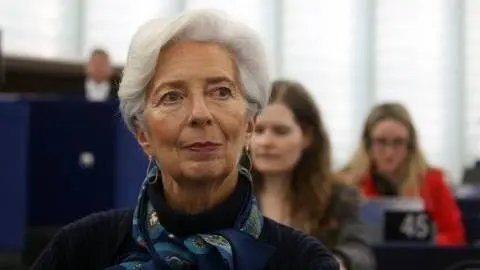ECB preview: Another communication test
Next week's ECB meeting could open the door to additional easing before the end of the year
When Christine Lagarde started her job as ECB president last November, the job description was mainly focused on possible normalisation of monetary policy, reviving the team spirit in the Governing Council and preparing the strategic review. Ten months later, Lagarde has gone through a sea of emotions and the worst economic crisis in decades.
Tomorrow's meeting will bring another communication test for Christine Lagarde: how to temper the euro without causing unwarranted market movements.
What to watch
In our view, there are three important issues to look for.
There is a fresh set of ECB projections, related to this lots of attention will be on the ECB’s reaction to the recent strengthening of the euro and finally, with the Fed's latest announcement, there should be interest in the ECB’s own strategy review.
As regards new macro projections, we expect the ECB to acknowledge the v-shaped rebound since the lifting of the lockdown measures, while at the same time still stress the high level of uncertainty. To some extent, comments by ECB officials over the last weeks suggested some slight differences regarding the ECB’s economic assessment. While Isabel Schnabel underlined that the ongoing recovery was basically in line with the ECB’s own base case scenario, Philip Lane sounded somewhat more cautious, pointing to the probability of a long-lasting and only gradual recovery.
We will have a close look at the ECB’s inflation projections. In June, the ECB expected an inflation rate of 1.3% for 2022. Any downward revision will increase the likelihood of additional monetary stimulus.
The recent strengthening of the euro could be one driver for such downward revisions. The stronger euro could easily lead to a downward revision of the inflation forecasts by 0.2 percentage points. However, recent ECB research stresses that the impact of exchange rate moves on inflation, as well as growth, depends on the nature of the shock and many structural factors.
Interestingly, and in our view highly policy-relevant, the ECB’s research also concludes that the more credibly and effectively monetary policy counteracts external inflationary pressures, the lower the pass-through of exchange rate movements will be. An open door for more stimulus.
As regards the ECB’s strategy review, the Fed’s decision to move to an average inflation target has set the scene. We don’t expect any insights into the ECB’s strategy next week.
It is hard to believe that Christine Lagarde will want to preempt the discussion which has just started. In the end, however, we still see the ECB moving to a more symmetric target changing the definition of price stability to “around 2%”.
How to talk 'euro'
Given the still high level of uncertainty surrounding any economic outlook, the ECB is highly unlikely to change its policy stance tomorrow.
The interesting part of the meeting and the press conference will be Lagarde’s comments on the euro exchange rate. She knows that it is hard to reverse a trend in the fx market only with words. Words can dampen or temporarily stop a trend but can also accelerate it. However, all of this is not of the highest importance.
What will count most next week is the question of whether the stronger euro has already opened the door for more monetary stimulus in the coming months.
This publication has been prepared by ING solely for information purposes irrespective of a particular user's means, financial situation or investment objectives. The information does not constitute investment recommendation, and nor is it investment, legal or tax advice or an offer or solicitation to purchase or sell any financial instrument. Read more
Download
Download article
3 September 2020
What to expect from the ECB today This bundle contains 4 Articles